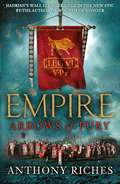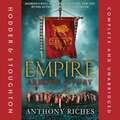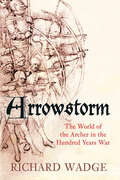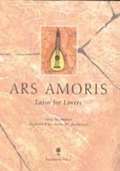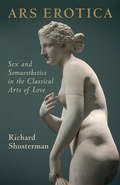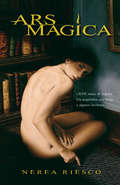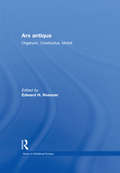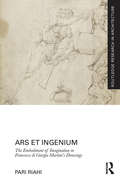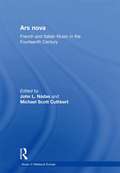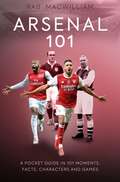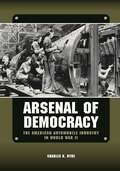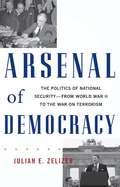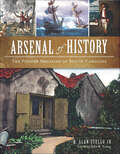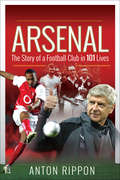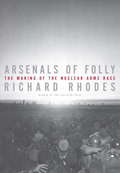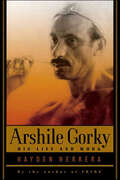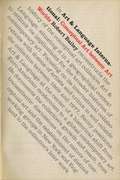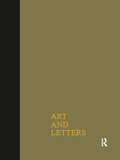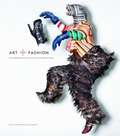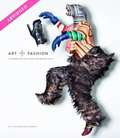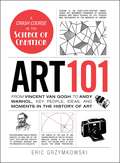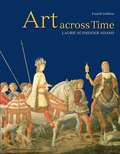- Table View
- List View
Arrows of Fury: Empire II
by Anthony RichesThe Battle of the Lost Eagle saved Hadrian's Wall , but the new Roman governor of Britannia must stamp out the rebellion of the northern tribes or risk losing the province. Rampaging south with sword and flame under the command of their murderous chieftain Calgus, they have stretched his forces to the limit. For Marcus - now simply Centurion Corvus of the 1st Tungrian cohort - the campaign has become doubly dangerous. As reinforcements flood into Britannia he is surrounded by new officers with no reason to protect him from the emperor's henchmen. Death could result from a careless word as easily as from an enemy spear Worse, one of them is close on his heels. While Marcus is training two centuries of Syrian archers to survive a barbarian charge and then take the fight back to their enemy, the new prefect of the 2nd Tungrians has discovered his secret. Only a miracle can save Marcus and the men who protect him from disgrace and death . . . Anthony Riches once again brings meticulous research together with brilliant storytelling to capture the authentic feel of what life was like for the Roman Army in a brutal war with a remorseless enemy.
Arrows of Fury: Empire II (Empire series #2)
by Anthony RichesThe Battle of the Lost Eagle saved Hadrian's Wall , but the new Roman governor of Britannia must stamp out the rebellion of the northern tribes or risk losing the province.Rampaging south with sword and flame under the command of their murderous chieftain Calgus, they have stretched his forces to the limit...'A master of the genre' The TimesFor Marcus - now simply Centurion Corvus of the 1st Tungrian cohort - the campaign has become doubly dangerous. As reinforcements flood into Britannia he is surrounded by new officers with no reason to protect him from the emperor's henchmen. Death could result from a careless word as easily as from an enemy spearWorse, one of them is close on his heels. While Marcus is training two centuries of Syrian archers to survive a barbarian charge and then take the fight back to their enemy, the new prefect of the 2nd Tungrians has discovered his secret. Only a miracle can save Marcus and the men who protect him from disgrace and death . . . Anthony Riches once again brings meticulous research together with brilliant storytelling to capture the authentic feel of what life was like for the Roman Army in a brutal war with a remorseless enemy.
Arrows of Fury: Empire II (Empire series #2)
by Anthony RichesThe thrilling sequel to WOUNDS OF HONOUR continues this action-packed series set in Roman Britain.The Battle of the Lost Eagle saved Hadrian's Wall, but the new Roman governor of Britannia must stamp out the rebellion of the northern tribes or risk losing the province. Rampaging south with sword and flame under the command of their murderous chieftain Calgus, they have stretched his forces to the limit.For Marcus - now simply Centurion Corvus of the 1st Tungrian cohort - the campaign has become doubly dangerous. As reinforcements flood into Britannia he is surrounded by new officers with no reason to protect him from the emperor's henchmen. Death could result from a careless word as easily as from an enemy spear.Worse, one of them is close on his heels. While Marcus is training two centuries of Syrian archers to survive a barbarian charge and then take the fight back to their enemy, the new prefect of the 2nd Tungrians has discovered his secret. Only a miracle can save Marcus and the men who protect him from disgrace and death . . .Anthony Riches once again brings meticulous research together with brilliant storytelling to capture the authentic feel of what life was like for the Roman Army in a brutal war with a remorseless enemy.(P)2011 Hodder & Stoughton Limited
Arrowstorm: The World of the Archer in the Hundred Years War
by Richard WadgeThis book chronicles the overwhelming importance of the military archer in the late medieval period. The longbow played a central role in the English victory at the battles of Crecy and Agincourt. Completely undermining the supremacy of heavy cavalry, the longbow forced a wholesale reassessment of battlefield tactics. Richard Wadge explains what made England's longbow archers so devastating, detailing the process by which their formidable armament was manufactured and the conditions that produced men capable of continually drawing a bow under a tension of 100 pounds. Uniquely, Wadge looks at the economics behind the supply of longbows to the English army and the social history of the military archer. Crucially, what were the advantages of joining the first professional standing army in England since the days of the Roman conquest? Was it the pay, the booty, or the glory? With its painstaking analysis of contemporary records, Arrowstorm paints a vivid portrait of the life of a professional soldier in the war which forged the English national consciousness.
Ars Amoris - Latin for Lovers
by Sean McmahonThe charms, splendors and miseries of love are celebrated in Latin and in English.
Ars Erotica: Sex and Somaesthetics in the Classical Arts of Love
by Richard ShustermanThe term ars erotica refers to the styles and techniques of lovemaking with the honorific title of art. But in what sense are these practices artistic and how do they contribute to the aesthetics and ethics of self-cultivation in the art of living? In this book, Richard Shusterman offers a critical, comparative analysis of the erotic theories proposed by the most influential premodern cultural traditions that shaped our contemporary world. Beginning with ancient Greece, whose god of desiring love gave eroticism its name, Shusterman examines the Judaeo-Christian biblical tradition and the classical erotic theories of Chinese, Indian, Islamic, and Japanese cultures, before concluding with medieval and Renaissance Europe. His exploration of their errors and insights shows how we could improve the quality of life and love today. By using the engine of eros to cultivate qualities of sensitivity, grace, skill, and self-mastery, we can reimagine a richer, more positive vision of sex education.
Ars Magica
by Nerea RiescoSiglo XVII, norte de España. Un inquisidor, una bruja y algunos hechizos. Una novela vibrante que recupera la fuerza de la tradición mágica de nuestra cultura. En 1610, en Logroño, han sido condenadas a la hoguera once personas acusadas de brujería. Sin embargo, amplias zonas del señorío de Vizcaya y Navarra siguen sufriendo la presencia del demonio y sus secuaces... Para tranquilizar al pueblo, el Santo Oficio envía a Alonso de Salazar y Frías, un inquisidor secretamente descreído: ha perdido la fe en Dios y no cree en el diablo ni en las brujas. Su historia se va a cruzar irremediablemente con la de la joven Mayo, que recorre los caminos vendiendo hechizos y ensalmos. A lo largo de su viaje, ambos tendrán que enfrentarse a poderes perversos que sembrarán su paso de obstáculos, así como a la muerte de las personas que más aman en el mundo. Una trama apasionante que recupera la fuerza de la tradición mágica de nuestracultura, en la que está implicada incluso la élite del poder político y religioso del Siglo de Oro, y que se basa en un episodio de nuestra historia que quedó documentado y misteriosamente olvidado en los sótanos del Santo Oficio durante casi tres siglos... Reseñas:«Una novela que nos lleva al pasado, a los tiempos oscuros en los que unos pocos controlaban la vida de muchos, en los que aún pervivían en las zonas rurales la creencia en el diablo y en el poder de la magia. Nerea Riesco nos introduce en ese mundo donde la realidad y la ficción se mezclan hasta confundirse y nos hace sentir parte de ambas.»Toti Martínez de Lezea «Nerea Riesco nos introduce en ese mundo donde la realidad y la ficción se mezclan hasta confundirse y nos hace sentir parte de ambas.»Toti Martínez de Lezea
Ars antiqua: Organum, Conductus, Motet (Music In Medieval Europe Ser.)
by Edward H. RoesnerThe ars antiqua began to be mentioned in writings about music in the early decades of the fourteenth century, where it was cited along with references to a more modern "art", an ars nova. It was understood by those who coined the notion to be rooted in the musical practices outlined in the Ars musica of Lambertus and, especially, the Ars cantus mensurabilis of Franco of Cologne. Directly or indirectly the essays collected in this volume all address one or more of the issues regarding ars antiqua polyphony-questions relating to the nature and definition of genre; the evolution of the polyphonic idiom; the workings of the creative process including the role of oral process and notation and the continuum between these extremes; questions about how this music was used and understood; and of how it fits into the intellectual life of the twelfth and thirteenth centuries. Some of the essays ask new questions or approach long-standing ones from fresh perspectives. All, however, are rooted in a line of scholarship that produced a body of writing of continuing relevance.
Ars et Ingenium: The Embodiment Of Imagination In Francesco Di Giorgio Martini's Drawings (Routledge Research in Architecture)
by Pari RiahiWhen did drawing become an integral part of architecture? Among several architects and artists who brought about this change during the Renaissance, Francesco di Giorgio Martini’s ideas on drawing recorded in his Trattati di architettura, ingegneria e arte militare (1475-1490) are significant. Francesco suggests that drawing is linked to the architect’s imagination and central in conveying images and ideas to others. Starting with the broader edges of Francesco’s written work and steadily penetrating into the fantastic world of his drawings, the book examines his singular formulation of the act of drawing and its significance in the context of the Renaissance. The book concludes with speculations on how Francesco’s work is relevant to us at the onset of another major shift in architecture caused by the proliferation of digital media.
Ars nova: French and Italian Music in the Fourteenth Century (Music In Medieval Europe Ser.)
by John L. Nádas Michael Scott CuthbertIn the early fourteenth century, musicians in France and later Italy established new traditions of secular and sacred polyphony. This ars nova, or "new art," popularized by theorists such as Philippe de Vitry and Johannes de Muris was the among the first of many later movements to establish the music of the present as a clean break from the past. The rich music of this period, by composers such as Guillaume de Machaut and Francesco Landini, is not only beautiful, but also rewards deep study and analysis. Yet contradictions and gaps abound in the ars nova of the fourteenth and early fifteenth centuries-how do we read this music? how do we perform this music? what was the cultural context of these performances? These problems are well met by the ingenuity of approaches and solutions found by scholars in this volume. The twenty-seven articles brought together reflect the broad methodological and chronological range of scholarly inquiry on the ars nova.
Arsenal 101: A Pocket Guide in 101 Moments, Facts, Characters and Games
by Rab MacWilliamArsenal 101 is an entertaining compendium of Arsenal's fascinating history, facts, games, stories, personalities, legends and footballing adventures. Rab MacWilliam has revisited the club's history from its early years as Woolwich Arsenal at the end of the nineteenth century to its status as one of the leading European teams of the present day. Rab has distilled Arsenal's history into 101 facts, moments and stories, examining many of the key characters, matches, controversies, innovations, and dazzling instances of brilliance that have illuminated the proud history of this great, if occasionally erratic, club. Funny, irreverent, fascinating and insightful, Arsenal 101 is the ideal handbook for Gunners fans of all ages.
Arsenal of Democracy: The American Automobile Industry in World War II
by Charles K. HydeThroughout World War II, Detroit's automobile manufacturers accounted for one-fifth of the dollar value of the nation's total war production, and this amazing output from "the arsenal of democracy" directly contributed to the allied victory. In fact, automobile makers achieved such production miracles that many of their methods were adopted by other defense industries, particularly the aircraft industry. In Arsenal of Democracy: The American Automobile Industry in World War II, award-winning historian Charles K. Hyde details the industry's transition to a wartime production powerhouse and some of its notable achievements along the way. Hyde examines several innovative cooperative relationships that developed between the executive branch of the federal government, U.S. military services, automobile industry leaders, auto industry suppliers, and the United Automobile Workers (UAW) union, which set up the industry to achieve production miracles. He goes on to examine the struggles and achievements of individual automakers during the war years in producing items like aircraft engines, aircraft components, and complete aircraft; tanks and other armored vehicles; jeeps, trucks, and amphibians; guns, shells, and bullets of all types; and a wide range of other weapons and war goods ranging from search lights to submarine nets and gyroscopes. Hyde also considers the important role played by previously underused workers-namely African Americans and women-in the war effort and their experiences on the line. Arsenal of Democracy includes an analysis of wartime production nationally, on the automotive industry level, by individual automakers, and at the single plant level. For this thorough history, Hyde has consulted previously overlooked records collected by the Automobile Manufacturers Association that are now housed in the National Automotive History Collection of the Detroit Public Library. Automotive historians, World War II scholars, and American history buffs will welcome the compelling look at wartime industry in Arsenal of Democracy.
Arsenal of Democracy: The Politics of National Security -- From World War II to the War on Terrorism
by Julian ZelizerIt has long been a truism that prior to George W. Bush, politics stopped at the water's edge--that is, that partisanship had no place in national security. In Arsenal of Democracy, historian Julian E. Zelizer shows this to be demonstrably false: partisan fighting has always shaped American foreign policy and the issue of national security has always been part of our domestic conflicts. Based on original archival findings, Arsenal of Democracy offers new insights into nearly every major national security issue since the beginning of the cold war: from FDR's masterful management of World War II to the partisanship that scarred John F. Kennedy during the Cuban Missile Crisis, from Ronald Reagan's fight against Communism to George W. Bush's controversial War on Terror. A definitive account of the complex interaction between domestic politics and foreign affairs over the last six decades, Arsenal of Democracy is essential reading for anyone interested in the politics of national security.
Arsenal of History: The Powder Magazine of South Carolina (Military)
by R. Alan Stello Jr.The Powder Magazine was completed circa 1713 as an arsenal to safely store munitions in the South Carolina colonial capital of Charles Town, serving continuously in defense through the 1740s and periodically until the 1820s. Rescued from destruction in 1902, the building has served as a museum for more than a century, inspiring countless other historic conservation efforts. Museum Director Alan Stello presents the story of the state's oldest public building by establishing connections between the arsenal and the significant episodes it has witnessed. Readers will enjoy an introductory look at South Carolina colonial military history while gaining an appreciation for this icon of history and preservation.
Arsenal: The Story of a Football Club in 101 Lives
by Anton RipponA history of the Gunners told through in-depth biographies of the team’s key players on and off the pitch, from its late 19th century beginnings to today.Arsenal: The Story of a Football Club in 101 Lives tells the history of the team through the biographies of key individuals associated with the club from its formation in the gas-lit days of Victorian Britain through to the present day.From David Danskin, the Scottish mechanical engineer and footballer who was the driving force behind the team raised at Dial Square, a workshop at the Royal Arsenal in Woolwich, to Arsene Wenger, the longest-serving and most successful manager in Arsenal’s history. The in-depth stories of the characters—players, managers, chairmen—here paint a fascinating picture of how the club—indeed, the game of football itself—has developed from workers playing for fun to today’s multi-million-pound business.
Arsenals of Folly: The Making of the Nuclear Arms Race
by Richard RhodesPulitzer Prize-winning author Richard Rhodes delivers a riveting account of the nuclear arms race and the Cold War. In the Reagan-Gorbachev era, the United States and the Soviet Union came within minutes of nuclear war, until Gorbachev boldly launched a campaign to eliminate nuclear weapons, setting the stage for the 1986 Reykjavik summit and the incredible events that followed. In this thrilling, authoritative narrative, Richard Rhodes draws on personal interviews with both Soviet and U.S. participants and a wealth of new documentation to unravel the compelling, shocking story behind this monumental time in human history--its beginnings, its nearly chilling consequences, and its effects on global politics today.From the Trade Paperback edition.
Arshile Gorky: His Life and Work
by Hayden HerreraFrom the Author of Frida, the Moving and Heroic Story of One of the Central Painters of the Twentieth CenturyBorn in Turkey around 1900, Vosdanik Adoian escaped the massacres of Armenians in 1915 only to watch his mother die of starvation and his family scatter in their flight from the Turks. Arriving in America in 1920, Adoian invented the pseudonym Arshile Gorky-and obliterated his past. Claiming to be a distant cousin of the novelist Maxim Gorky, he found work as an art teacher and undertook a program of rigorous study, schooling himself in the modern painters he most admired, especially Cézanne and Picasso. By the early forties, Gorky had entered his most fruitful period and developed the style that is seen as the link between European modernism and American abstract expressionism. His masterpieces influenced the great generation of American painters in the late forties, even as Gorky faced a series of personal catastrophes: a studio fire, cancer, and a car accident that temporarily paralyzed his painting arm. Further demoralized by the dissolution of his seven-year marriage, Gorky hanged himself in 1948.A sympathetic, sensitive account of artistic and personal triumph as well as tragedy, Hayden Herrera's biography is the first to interpret Gorky's work in depth. The result of more than three decades of scholarship-and a lifelong engagement with Gorky's paintings-Arshile Gorky traces the progress from apprentice to master of the man André Breton called "the most important painter in American history."
Art & Beauty
by Maurice de WulfThis work attempts to establish a philosophy of art that is both intellectual and objective. At first sight it may appear that these goals are at variance with contemporary ideas. On closer examination, however, the reader will see that the tendency is in the opposite direction, a closer approach to present-day thought rather than a departure from it. To admit that there exists a world other than that of our subjective states is to subscribe to an interpretation more in keeping with the real, and thus also with artistic reality. The intellectual and objective philosophy to which this book appeals in order to interpret the beauty of art will not be an intrusion, if it guards against all exclusiveness and does not itself compromise that which gives it its value.
Art & Language International: Conceptual Art between Art Worlds
by Robert BaileyIn Art & Language International Robert Bailey reconstructs the history of the conceptual art collective Art & Language, situating it in a geographical context to rethink its implications for the broader histories of contemporary art. Focusing on its international collaborations with dozens of artists and critics in and outside the collective between 1969 and 1977, Bailey positions Art & Language at the center of a historical shift from Euro-American modernism to a global contemporary art. He documents the collective's growth and reach, from transatlantic discussions on the nature of conceptual art and the establishment of distinct working groups in New York and England to the collective's later work in Australia, New Zealand, and Yugoslavia. Bailey also details its publications, associations with political organizations, and the internal power struggles that precipitated its breakdown. Analyzing a wide range of artworks, texts, music, and films, he reveals how Art & Language navigated between art worlds to shape the international profile of conceptual art. Above all, Bailey underscores how the group's rigorous and interdisciplinary work provides a gateway to understanding how conceptual art operates as a mode of thinking that exceeds the visual to shape the philosophical, historical, and political.
Art & Letters July-Winter 1918: 2 Volumes
by F. RutterFirst Published in 1971. This is a collection of Art and Letters journal presented in two volumes. Volume one includes content from this illustrated quarterly, July 1917 to June 1918 and Volume Two July 1918 to Spring 1920.
Art + Fashion
by E. P. Cutler Julien TomaselloA volume of magnificent proportions, Art + Fashion is as exciting and elegant as the creative partnerships it celebrates. Spanning numerous eras, men and women's fashion, and a wide range of art mediums, these 25 collaborative projects reveal the astonishing work that results when luminaries from the art world (such as Pollock, Haring, and Hirst) come together with icons of the fashion world (including Saint Laurent, Westwood, McQueen). From 20th-century legends such as Elsa Schiaparelli and her famous lobster dress painted by Salvador Dalí to 21st-century trailblazers such as Cindy Sherman and her self-portraits in vintage Chanel, these electric and provocative pairings--represented in lavish visuals and thoughtful essays reflecting on the history of each project--brim with the energy and possibility of powerful forces uniting.
Art + Fashion, Abridged Reading Edition
by E. P. Cutler Julien TomaselloArt + Fashion is as exciting and elegant as the creative partnerships it celebrates. In this abridged reading edition, readers will enjoy the book's sparkling and informative text in its entirety, plus a single stunning representative photo of each of the 25 collaborative projects profiled. Spanning numerous eras, men and women's fashion, and a wide range of art mediums, these collaborations reveal the astonishing work that results when luminaries from the art world (such as Pollock, Haring, and Hirst) come together with icons of the fashion world (including Saint Laurent, Westwood, McQueen). From 20th-century legends such as Elsa Schiaperelli and her famous lobster dress painted by Salvador Dalí to 21st-century trailblazers such as Cindy Sherman and her self-portraits in vintage Chanel, these electric and provocative pairings brim with the energy and possibility of powerful forces uniting.
Art 101
by Eric GrzymkowskiExplore the beautiful and complex world of art! Too often, textbooks obscure the beauty and wonder of fine art with tedious discourse that even Leonardo da Vinci would oppose. Art 101 cuts out the boring details and lengthy explanations, and instead, gives you a lesson in artistic expression that keeps you engaged as you discover the world's greatest artists and their masterpieces. From color theory and Claude Monet to Jackson Pollock and Cubism, this primer is packed with hundreds of entertaining tidbits and works of art that you won't be able to get anywhere else. So whether you're looking to master classic painting techniques, or just want to learn more about popular styles of art, Art 101 has all the answers--even the ones you didn't know you were looking for.
Art 101: From Vincent van Gogh to Andy Warhol, Key People, Ideas, and Moments in the History of Art
by Eric GrzymkowskiExplore the beautiful and complex world of art!Too often, textbooks obscure the beauty and wonder of fine art with tedious discourse that even Leonardo da Vinci would oppose. Art 101 cuts out the boring details and lengthy explanations, and instead, gives you a lesson in artistic expression that keeps you engaged as you discover the world's greatest artists and their masterpieces.From color theory and Claude Monet to Jackson Pollock and Cubism, this primer is packed with hundreds of entertaining tidbits and works of art that you won't be able to get anywhere else.So whether you're looking to master classic painting techniques, or just want to learn more about popular styles of art, Art 101 has all the answers--even the ones you didn't know you were looking for.
Art Across Time Combined (Fourth Edition)
by Laurie Schneider AdamsArt across Time combines sound scholarship, lavish visuals, and a lively narrative to provide students with a comprehensive, accessible, and engaging introduction to Art History. Popular with majors and non-majors alike, the text offers readers more than a chronology of art by placing each work within the time-and-place context within which it was created. <P><P>Encountering and interpreting a work of art in context offers the reader the richest possible experience of it. Large scale and high quality visual reproductions of artworks are often presented from multiple perspectives to enhance visual appeal and allow students to view details and elements of composition with greater ease. A thoughtful pedagogical approach helps students consider what they are viewing.
